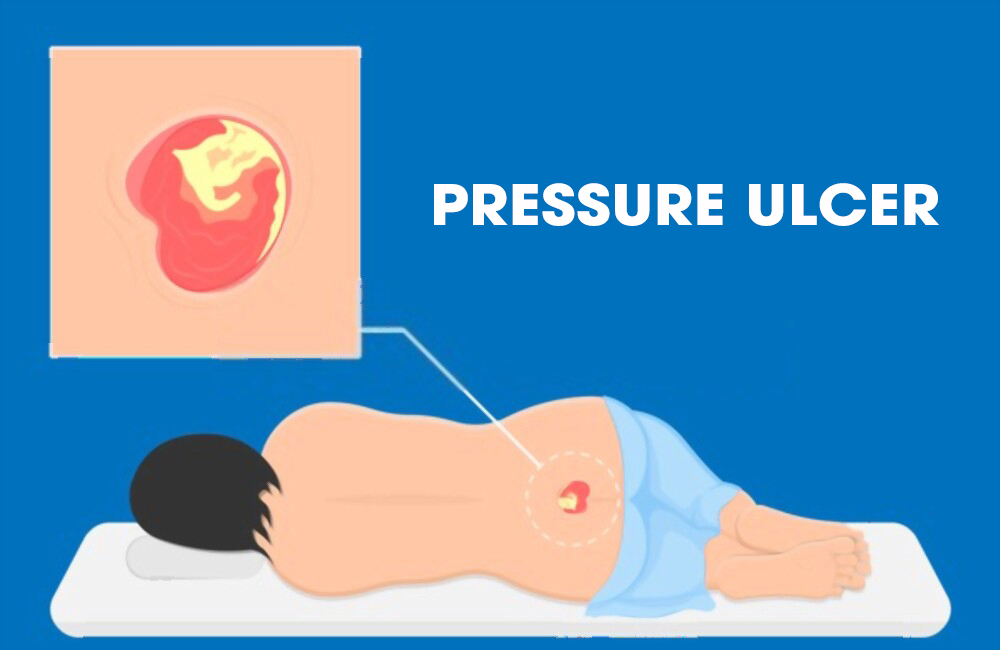Pressure Ulcer Stages
Pressure ulcers are one of the common causes of prolonged hospital stay and increased treatment costs in patients who are lying in bed for a long time and sedentary. If not treated promptly and properly, there is a high risk of complications, even death. Pressure ulcers are divided into 4 stages, increasing gradually according to the degree of damage of the ulcer.

Pressure ulcers are divided into 4 stages, increasing gradually according to the degree of damage of the ulcer
1. Characteristics of Pressure Ulcers, by Stage
-
Stage 1: The first stage is the mildest. It discolors the upper layer of your skin, commonly to a reddish color. In this stage, the wound has not yet opened, but the extent of the condition is deeper than just the top of the skin. The affected area may be sore to touch but has no surface breaks or tears. You may also experience mild burning or itching. You may notice that the area is red and your skin does not turn pale when pressed firmly. This means there is an interruption in blood flow and that an ulcer is forming. The texture and temperature of this developing sore will likely also be different from the surrounding normal tissues.
-
Stage 2: In the second stage, you’ll likely experience some pain from the ulcer. The sore area of your skin has broken through the top layer and some of the layers below. The break typically creates a shallow, open wound and you may or may not notice any drainage from the site. A stage 2 ulcer may appear as a serum-filled (clear to yellowish fluid) blister that may or may not have burst. The surrounding areas of the skin may be swollen, sore, or red. This indicates some tissue death or damage.
-
Stage 3: Sores that have progressed to the third stage have broken completely through the top two layers of the skin and into the fatty tissue below. An ulcer in this stage may resemble a crater. It may also smell bad.
-
Stage 4 ulcers are the most serious. These sores extend below the subcutaneous fat into your deep tissues like muscle, tendons, and ligaments. In more severe cases, they can extend as far down as the cartilage or bone. There is a high risk of infection at this stage.
2. Treatment of ulcers for each stage
You should treat stage 1 and 2 sores by removing pressure from the wound. You must seek medical attention for proper treatment.
You must seek immediate medical treatment if you have a stage 3 pressure ulcer. These sores need special attention. Your doctor may prescribe antibiotic therapy and remove any dead tissue to promote healing and to prevent or treat the infection.
People with stage 4 pressure ulcers need to be taken to the hospital immediately. Your doctor will likely recommend surgery. Recovery for this ulcer can take anywhere from three months to two years to completely heal.
Some measures to care for patients with pressure ulcers are as follows:
-
Wound care:
-
Cleaning: If the affected skin isn't broken, wash it with a gentle cleanser and pat dry. Clean open sores with water or a saltwater (saline) solution each time the dressing is changed.
-
Wound dressings: with stage 2 or more severe ulcers, a gel medication can be used to prevent contamination, remove necrotic tissue such as Multidex gel containing maltodextrin to help cover the ulcer, prevent infection, and heal the wound.

Multidex is used in the treatment of pressure sores